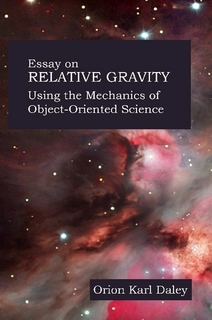The fundamental universe is viewed like a plasma of alternating currents. Seen, symmetry is conserved through polymorphism of inherent properties.
Concluded, given a wave length of some deep time, symmetry in properties is not at the exclusion of randomness.
Conservatively, as derivatives, the four known forces, the Electro Strong and Weak, Electromagnetism and Gravity are considered to share symmetry where differentiated by their context.
Regarded as opposites, the relationship of dark and light matter is seen as that of impedance where particles to galaxies, or any other body between, are first viewed as manifolds having common and inherent properties.
Plausible, particles can have opposite charge, and harmonics of vectors for strings with wavelengths subject to distortion. Bodies can be considered skew-able and cumulative with respect to others within their context as reference frames. Gravity is viewed as their fundamental relationship through superposition.
For a practical example in application, where not to conflict, but to extend current theory, a basis for the Big Bang can consist of a view for some vector Zr from one perspective, and expressed as fq=E/T. Vector Zr is seen in our universe to represent a thread in a quantum fabric of many.
As a reference frame,vector Zr is assumed here to be able to intersect with instances of itself as X and Y similar to the nature of AC current, when in phase.
As separate reference frames, when in coincidence as an event, X,Y and Z can derive other reference frame(s) between them. For example, current when in phase; and its magnetic field. Assumed:
This event yields a manifold of some dimension XYZ. The event is considered for some period referred to as a relative time.
The event is considered to be in the form of a uniform relative force( URF) as a body for the manifold.


Normalized to a polygon, this body, seen as a fundamental manifold, is considered a building block for form as it applies to concrete representation.
Through polymorphism, the fundamental particle is thought to be expressed where properties are conserved.
Its relationship with peers is based on its level of superposition as some spacial time expressed as: M1/D2=M2/D1 or net zero in force.
Distances D1 and D2 are derived as:
Spacial Time: Consider having a continuum for the universe represented as a current’s sinusoidal wave form:

As some wave length, of deep time, infinity should be allowed as being something beyond our ability to measure. Regardless of measure, in a cycle, on one side of the wave could perhaps be the Universe’s expansion while the other being its contraction. In this way, gravity and its relation to light can be realized.
Time as a derivative can also be construed as some spacial time. For example, many phases of alternating current acting as separate or asynchronous reference frames of time and dimension combined can yield others. Further, due to a measure of time between them, each reference frame is with respect to the others past as representing its own present.

A spacial time can describe the time and dimension of each frame and also when combined as a synchronistic event between the two. That is, for a period of time, like in the case of superposition, multiple asynchronous frames share common or synchronous references to each other.For the universe, whether due to an impedance, collision, or some form of superposition, the synchronistic event of spacial time representing another reference frame is considered in infinite in its quanta of probabilities.
The concept of alternating current within spacial times can make Steven Hawking’s 100 million black holes per cubic light year be within reason.

- Making up a dark fabric, while based on infinite probability, each black hole could be its own alternator and weaved together at the speed of light by alternating currents that are relative in spacial time.





 Posted by Orion Karl Daley
Posted by Orion Karl Daley